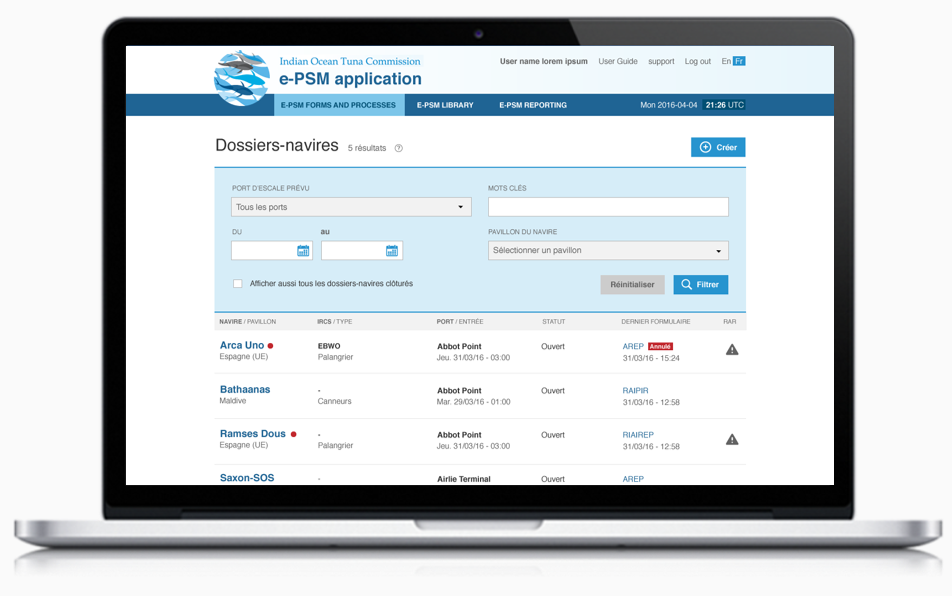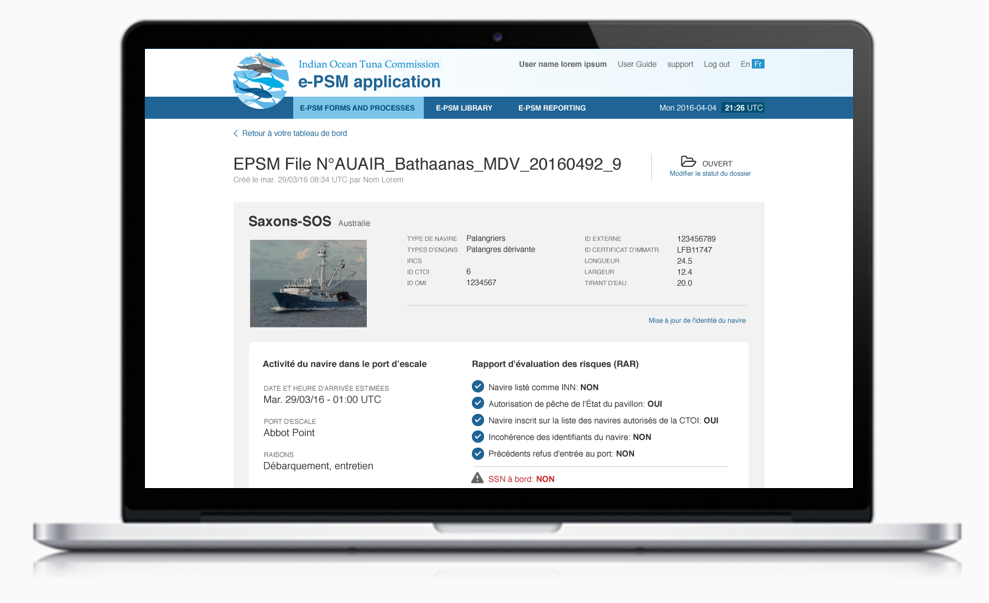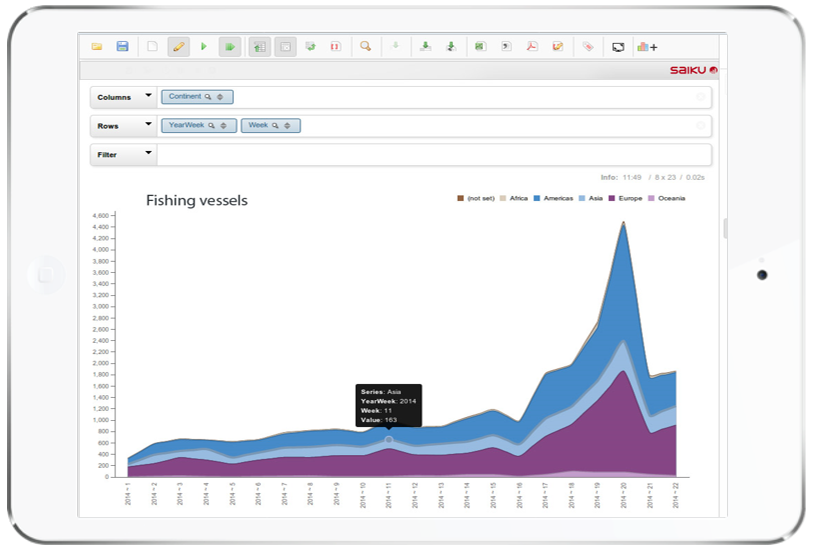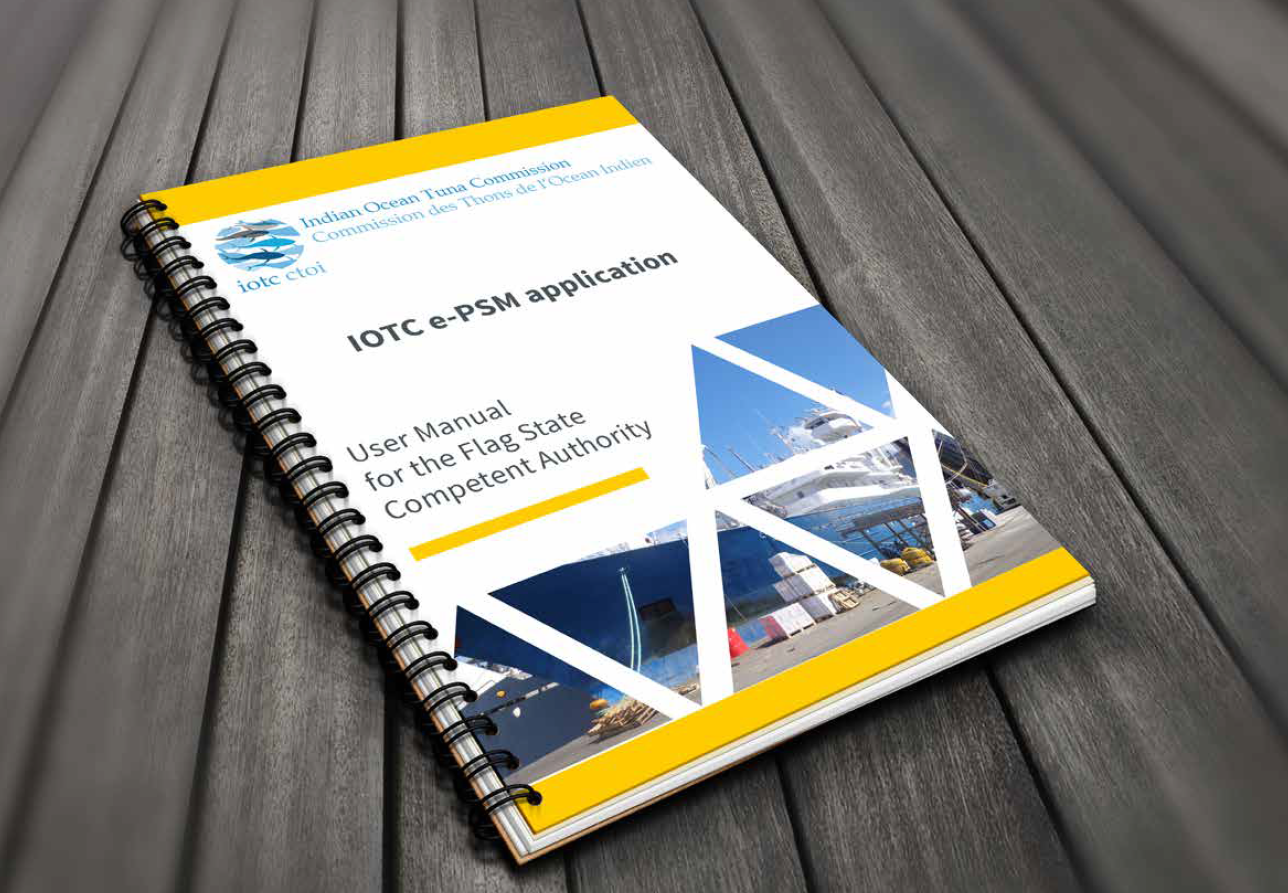Important notice : this project has been designed and developed by Stefano Piredda (Application designer, project manager & front-end developer, CEO of ORTAX Consulting & Naes Consulting) and Grégoire Pichenot (Back-end expert, Java developer, CEO de Pirog Ingenierie) in collaboration with Olivier Roux (Senior Fisheries Information Expert).
Les Clients et investisseurs : Organisation des Nations Unies (ONU) pour l'Alimentation et l'Agriculture, Banque mondiale et Commission de l'océan Indien
Organisation des Nations unies pour l'alimentation et l'agriculture (ONUAA/FAO)
The Food and Agriculture Organization of the United Nations (FAO) is a specialized agency of the United Nations system that helps countries create an environment conducive to improving and increasing investments in food security, nutrition, agriculture, and rural development. It aims to boost incomes and safeguard (or protect) the environment.
WorldBank
With its 189 member countries, staff from over 170 nationalities, and offices in more than 130 countries, the World Bank is a unique global partnership working towards sustainable solutions that reduce poverty and promote shared prosperity. The World Bank thus funds 12,000 projects annually with a budget of $45 billion.
Indian Ocean Commission (IOC)
The Indian Ocean Commission (IOC) is an intergovernmental organization established in 1982 in Port Louis, Mauritius, and institutionalized in 1984 by the Victoria Agreement. It brings together five countries from the western Indian Ocean region: Comoros, France, Madagascar, Mauritius, and Seychelles.
The project: to implement a major digital transformation of all business processes in the fishing industry in the Indian Ocean
Context
The rational and sustainable use of living marine resources has been the subject of international debate for many decades. This has led to the negotiation of numerous fishing agreements by recognized international organizations. In 2009, the FAO Agreement on Port State Measures (PSM) was finalized, aiming to prevent, deter, and eliminate illegal, unreported, and unregulated (IUU) fishing. This agreement is the result of several decades of extensive cooperation among the international community, states, and regional fisheries management organizations (RFMOs) to combat IUU fishing activities.
In this context, three resolutions will be adopted:
-
Resolution 05/03, which defines port inspection as a central element of the control and inspection program to combat illegal fishing.
-
Resolution 10/11 (derived from the 2009 FAO Agreement), which allows the entry of port access to be granted or denied to vessels known or suspected of being involved in illegal, unreported, and unregulated (IUU) fishing activities; denies the use of port facilities and services; orders vessel inspections; and permits port states to allow IUU vessels to enter their ports for coercive measures.
-
Resolution 12/05, aimed at monitoring and controlling at-sea transshipment of goods from large fishing vessels.
The expected solution
Given that current procedures are still carried out manually on paper or sometimes by fax, it has been decided to move towards complete digitalization via an information system complemented by several dedicated applications. These will be accessible via an internet browser both on land and at sea, available 24/7/365, and will include features such as a document library and advanced analytical report generation capabilities. This is referred to as the digitalization of the "PSM process," which currently consists of paper forms.
What is the "PSM Process"?
A PSM process consists of a series of forms and reports designed to cover all the stages of a vessel's arrival and departure at one of the 150 ports concerned in the Indian Ocean. Entry may be accepted or denied (AREP form) by the Port Authority, and additional information requests can be made (RAI-AREP). A "Fishing Vessel Notification" (NFV) will determine access: denial, acceptance with restrictions, or unrestricted acceptance. Once in port, the Port Authority may conduct one or more vessel inspections, resulting in an Inspection Report (PIR), which may be supplemented by additional information requests (RAI-PIR). The Port Authority may also inspect and monitor the entire unloading phase at the port, and/or transshipment to another vessel, using two types of forms (TRX-TD and OLT). However, upon departure from the port, the vessel will not need to follow any e-PSM procedures.
The 6 challenges to address
-
Integration of legacy systems: transitioning from manual paper-based processes and fax communications to a comprehensive digital system may require integrating with or replacing existing legacy systems. Ensuring compatibility and data consistency across old and new systems will be crucial.
-
User training and adaptation: ensuring that all users, including port authorities and fishing vessel operators, are trained and comfortable with the new digital system. This includes understanding how to use the various applications, forms, and features effectively.
-
Data security and privacy: protecting sensitive information related to fishing vessels, inspections, and port operations. Implementing robust cybersecurity measures to prevent data breaches and unauthorized access is essential.
-
System reliability and maintenance: ensuring that the digital system operates reliably 24/7/365, with minimal downtime. Regular maintenance and updates will be necessary to address any technical issues and adapt to evolving requirements.
-
Interoperability and standardization: making sure that the new system can communicate and exchange information seamlessly with other systems used by different countries and organizations involved in port state measures. Standardizing formats and protocols will be key.
-
Legal and regulatory compliance: ensuring that the digital system complies with international agreements, regulations, and standards related to port state measures and fishing industry practices. This includes adapting the system to meet any new legal requirements that may arise.
Who will be the users?
The information system must be capable of interacting with, notifying, and providing secure and personalized access to the following categories of users:
- Representatives of the 37 member and concerned states
- Crew members of all artisanal or industrial fishing vessels
- Representatives of the vessels: captain, owner, beneficial owner, operator, agent
- Flag State officers
- Port State officers
- Officers, scientists, researchers, and high-level government officials or those from the Indian Ocean Commission (IOC) and the FAO
The solution : A data-driven information system built on a common data foundation, featuring three web applications developed using Java and Drupal, with a unified graphical interface.
An information system and 3 applications
Following the feasibility study and the design and specification phase, and based on the project's initial requirements, it has been decided to develop an information system called the "e-PSM application," organized into three modules: one Java application, one PHP/Drupal application, and one solution based on Saiku Analytics & Pentaho. This system will be complemented by an intelligent alert system (VAIR), all unified on a common data foundation, and featuring a unified graphical interface for user convenience.
e-PSM Forms and Processes (formulaires et processus) : a web application built using Java / Spring / Maven / SQL.
This first module, "e-PSM Forms and Processes," serves as the platform for the fishing sector, port state members, and flag state members to manage responsibilities under Resolution 10/11. It allows the fishing sector to electronically submit a port entry request (AREP), enabling decisions on vessel entry and communication of those decisions to the vessel or its representative.
The module tracks the vessel’s journey from arrival to departure, retaining information for analysis, statistics, and prevention. It supports online submission of all required forms and includes real-time data dashboards and email notifications tailored to different user needs.
Port Authorities, for instance, have a dashboard for displaying information on vessels wishing to dock, with real-time updates and an intelligent alert system (VAIR). They can access detailed vessel profiles, including photos and navigation history, through connections to international databases.
e-PSM VAIR (Vessel Activity & Intelligence Report) : An artificial intelligence application developed in Java / Spring
The VAIR is an intelligent report generated for each vessel and continuously updated with real-time data from various sources. It assists the Port State in assessing risks associated with the vessel and assigning a risk profile with graded criteria (high, medium, or low).
The report will enable comparisons between declarations and information contained in one or more databases, highlight any IUU (Illegal, Unreported, and Unregulated) lists, analyze activity history (e.g., AREP forms, ports called, indicators, and owners), and catalog any relevant information from third parties.
The Vessel Intelligence Report (VAIR) is a decision-support tool with a significant impact, enabling the decision to grant or deny entry to a vessel, or to proceed with a port inspection. It focuses on detected issues and presents information in three display modes: on the Port Authority dashboard, in a summary report displayed on the vessel’s profile, and in the form of a shareable or printable PDF report
e-PSM Library (Document Library): a web application built using PHP / Drupal.
This module is a collaborative platform for sharing and searching information among thousands of documents, technical reports, meeting reports, videos, as well as all the data collected in real-time by the Java module.
This represents a challenge that has been successfully addressed: integrating two modules from different (and competing) technological stacks—JAVA/SQL on one side and PHP/Drupal/MySQL on the other.
e-PSM Report (Statistical and Analytical Reports): a solution based on Saiku Analytics and Pentaho.
This third module for creating "e-PSM Reports" is the tool for generating analytical reports on the activities of foreign vessels in a port or on the activities of vessels flying a foreign flag. The solution is based on integration with the Open Source Pentaho Business Analytics decision-making platform and the Saiku Analytics solution (already adopted by the Food and Agriculture Organization of the United Nations (FAO) and highly relevant for Big Data applications).
This statistical and analytical module will enable users to explore data sources from the information system directly through their web browser, using a drag-and-drop interface to examine the data from various perspectives. It will also allow users to generate, share, and print structured reports.
The Documentation and Training Provided
At the end of this project, a series of related documentation was created, ranging from the technical environment and data architecture to documentation tailored for each major category of users: authorities, ship captains, and the administrations of each concerned country. Consultation and training workshops for users were conducted in various regions around the world, with a specific focus on Africa and Asia.




